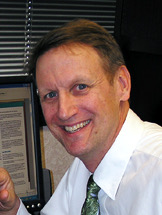What do large, institutional MOB investors look for when seeking purchases?
For the most part, they prefer larger portfolios in order to add instant scale. They prefer properties occupied by strong, perhaps credit-rated, health systems. And, they want high quality real estate: well-maintained, perhaps newer buildings in good locations.
It has long been believed that the treasure trove of MOB assets lie with the health systems themselves.
However, even though the health systems still own a vast majority of the country’s MOBs – estimated at 75 percent or more – they have been reluctant to monetize with any regularity for many years. And, if truth be told, the portfolios owned by the health systems might not match the quality of those held by third-party firms that specialize in owning, managing and maintaining healthcare real estate (HRE).
Perhaps the notion that the MOBs owned by health systems are the most highly coveted should be rethought, as in many cases the MOBs owned by well-known, reputable HRE development firms more accurately fit the description of what investors are looking for.
The only problem is, such portfolios don’t come along very often.
When they do, however, demand is high because developer-owned assets are “usually newer-construction medical offices that enjoy sponsorship and occupancy from a health system or provider, and, thus, investors hope to draft off of the developer’s healthcare relationships and tap into the developers’ expertise about medical office design, development, property management and leasing,” said Mindy Berman, managing director with Jones Lang LaSalle’s (NYSE: JLL) healthcare capital markets team.
Berman and the JLL team brokered such a sale in August, when well-known HRE developer Rendina Healthcare Real Estate sold a 10-MOB portfolio for more than $110 million to Scottsdale, Ariz.-based Everest Healthcare Properties LLC, a private equity investment manager focused on medical properties.
“We did have significant interest from all varieties of healthcare investors,” said Richard Rendina, chairman and CEO, following the closing. “Fifty-three investors signed CAs (confidentiality agreements) and we received five offers.”
As noted, developer sales are somewhat rare, as such companies, in contrast to health systems, typically own dozens of assets, not scores or hundreds. And, they often prefer to hold on to their MOBs to generate steady income from rents.
However, developers can sometimes be motivated to sell when cap rates are low and pricing soars, as has been the case lately.
“We didn’t need to sell these assets to redeploy the capital into new projects, as we are well-capitalized,” Rendina noted. “But like anyone, we are certainly aware of market conditions, and we feel it is prudent to at least consider monetizing assets when pricing is high.”
While Rendina’s sale was perhaps the most recent large developer monetization, a few others took place in the last year or so. Those included Atlanta-based Meadows & Ohly’s sale of 15 MOBs to Healthcare Realty Trust (NYSE: HR) in late 2017 for $612.5 million; Minneapolis-based United Properties’ sale of the 103,000 square foot TRIA Orthopedic MOB in Bloomington, Minn., for $35.3 million in Q1 2018; and, also in Q1, the 95 percent sale of the 350,000 square foot Conventus MOB in Buffalo, N.Y., for $122.5 million to a Hong Kong-based investor by a partnership of Seavest and a local development firm, Ciminelli Development.
Denver-based HRE development firm NexCore and its joint venture partner, Chicago-based Heitman, also sold an 11-MOB portfolio to Healthcare Trust of America (NYSE: HTA) in May 2017 for $150 million.
John Mugford is the Editor of Healthcare Real Estate Insights. For more information on HREI, please visit www.HREInsights.com.

